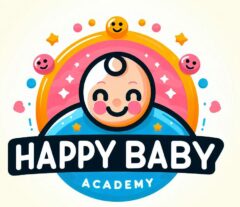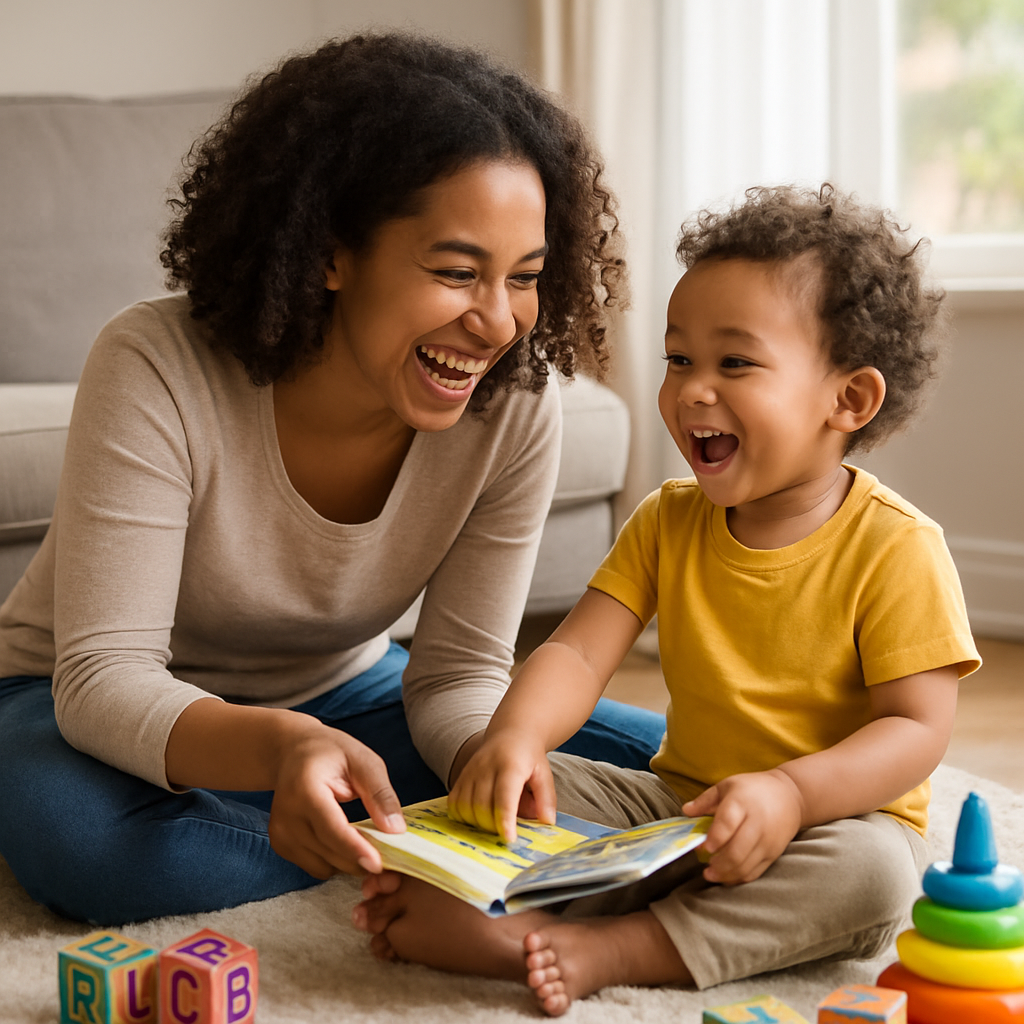Figuring out what your baby should be doing communication-wise at different ages can feel like a puzzle. It’s not just about the first words, either. There’s a whole journey from simple sounds to understanding what you’re saying. This guide breaks down the typical Language Milestones & Techniques you can expect from birth to two years, helping you understand and support your little one’s amazing progress.
Key Takeaways
- Babies start communicating from day one with cries, then cooing and babbling. By 6 months, they might make sounds like “ma” or “ba.”
- Around 12 months, babies often say their first real words and can understand simple requests.
- By 24 months, toddlers might use two- or three-word phrases like “me go” or “more drink.”
- Understanding language (receptive) comes before speaking it (expressive). Babies learn by listening to you talk, sing, and read to them.
- Talking, singing, and reading with your baby are the best ways to help their language grow. If you have concerns, talk to your child’s doctor.
Understanding Early Language Milestones & Techniques
Understanding how your baby communicates is a big part of their early development. It’s not just about the words they eventually say, but also the sounds, gestures, and reactions they use from the very beginning. Think of it as building blocks. First, they learn to understand what’s happening around them, and then they start to express their own needs and feelings. This journey is unique for every child, but there are general patterns we can look for.
The Foundation of Communication: Birth to 3 Months
Right from the start, babies are listening. Even before they can make complex sounds, they’re picking up on the rhythm and tone of voices, especially yours. They might not understand the words, but they recognize familiar sounds. You’ll notice they react to noise, perhaps by blinking or startling, and they’ll often quiet down when they hear a familiar voice. Their main way of expressing themselves at this stage is through crying, and you’ll soon learn that different cries can mean different things – hunger, discomfort, or just needing a cuddle.
- Babies at this age can recognize your voice.
- They start making simple cooing sounds.
- They might smile when you appear.
- Their cries can vary to signal different needs.
Exploring Sounds: 4 to 6 Months
This is when things get really interesting with sounds! Your baby will start to babble, making a wider range of noises like “goo” or “ba.” They’re experimenting with their voice, using it to show they like something or don’t. You’ll also see them start to turn their eyes toward sounds, trying to figure out where they’re coming from. They’re also becoming more aware of music and different tones in voices, responding to happy or sad sounds.
- Babbling becomes more varied.
- Babies use their voice to express likes and dislikes.
- They start to move their eyes toward sounds.
- They respond to changes in your tone of voice.
First Words and Understanding: 7 to 12 Months
Around this time, babies start to connect sounds with meaning. They might try to copy sounds you make, and you might hear them say simple words like “mama” or “dada,” often without fully understanding what they mean yet. They’re also starting to understand simple instructions, like “Come here.” You’ll notice they look for things when you name them, like their “shoe.” They’re really starting to grasp that words have power and can be used to communicate.
- Babies may try to imitate speech sounds.
- They might say their first few words.
- They begin to understand simple commands.
- They start to associate words with objects.
Learning to communicate is a unique process for each child. While these milestones offer a guide, remember that every baby develops at their own pace. The most important thing is consistent interaction and a supportive environment.
Developing Expressive Language Skills
Expressive language is all about how your little one starts to get their own thoughts and needs out into the world. It’s the flip side of understanding what you say, and it really starts to blossom in these early months. Think of it as their personal broadcast system, moving from simple sounds to actual words and even short sentences.
From Babbling to Words: 6 to 12 Months
This is a super exciting time for expressive language! Babies go from making those sweet cooing sounds to experimenting with consonant-vowel combinations like “ma-ma,” “da-da,” and “ba-ba.” They’re not necessarily talking to you yet, but they are definitely practicing the building blocks of speech. You might notice them using these sounds more intentionally, perhaps when they see a familiar person. Around their first birthday, many babies will say their first real word. It might be simple, like “mama,” “dada,” or “ball,” but it’s a huge step!
Building Sentences: 12 to 24 Months
Once those first words appear, the floodgates often open. Between 12 and 24 months, toddlers start putting two words together to make simple phrases. Things like “more juice,” “mama go,” or “bye-bye car” become common. They’re starting to express desires, observations, and requests. This is also when they might start using gestures more purposefully to communicate, like pointing to something they want or waving goodbye. It’s all part of their growing ability to express themselves.
Understanding and Responding: The Role of Receptive Language
While we’re talking about expressive language, it’s impossible to ignore receptive language. This is your baby’s ability to understand what you’re saying. They start picking up on words and meanings long before they can say them themselves. They’ll follow simple directions, recognize their name, and respond to familiar voices. This understanding is the bedrock upon which their own expressive language is built. When they understand more, they have more to express. It’s a beautiful back-and-forth that builds social skills and connection.
It’s important to remember that every child develops at their own pace. Some babies might be stringing words together earlier, while others take a bit more time. The key is consistent interaction and providing a language-rich environment.
Nurturing Conversational Abilities

It’s pretty amazing to watch your little one start to communicate, isn’t it? It’s not just about them learning words, but also how they interact. Think of it like a back-and-forth game. When your baby babbles or points, that’s them “serving” a communication. Your job is to “return the serve” by talking back, smiling, or repeating what they seem to be trying to say. These simple exchanges build the foundation for all future conversations.
It’s all about being responsive. If your baby looks at a toy, you can say, “Oh, you see the red ball!” This adds words to their experience and shows them you’re paying attention. It’s not just about talking at them, but talking with them. Even very young babies are picking up on your tone and facial expressions. They learn a lot from how you react to them.
Here are some ways to encourage this back-and-forth:
- Pay attention to their cues: Watch what they look at, what sounds they make, and what they reach for. That’s their way of starting a conversation.
- Respond quickly: When they babble, babble back! If they point, name the object they’re pointing to. This shows them their communication matters.
- Use different tones and facial expressions: Make silly faces or sing songs. This helps them understand emotions and makes talking more fun.
- Keep it simple: Don’t worry about long explanations. Short, clear phrases are best when they’re just starting out.
Building these conversational skills early on is like planting seeds. The more you interact and respond, the more their communication abilities will grow. It’s a natural process, but your involvement makes a big difference.
Key Language Milestones & Techniques for Toddlers

As your little one moves past the baby stage and into toddlerhood, their language skills really start to take off. It’s a super exciting time! Around 18 to 24 months, you’ll notice a big jump in how many words they know and how they start putting them together. This period is all about expanding their world through words.
Expanding Vocabulary: 18 to 24 Months
This is when toddlers go from knowing a handful of words to a much larger vocabulary. They might be learning 5-10 new words a week! It’s not just about knowing the words, but also starting to associate them with objects and actions. You’ll hear them pointing and naming things, or repeating words you say.
- Naming objects: Point to things and say their names clearly. “Ball,” “dog,” “cup.”
- Singing songs and rhymes: Songs often have repetitive words and actions that help with memory.
- Reading books: Even simple board books with clear pictures are great for building vocabulary.
Forming Simple Phrases
Around 18-24 months, many toddlers start combining two words. Think “more juice,” “bye-bye car,” or “mama go.” This is a huge step because it shows they’re starting to understand how words work together to make meaning. It’s not always grammatically perfect, but it’s communication!
This ability to string words together, even just two at a time, is a sign that their brain is making connections and they’re starting to grasp the structure of language. It’s like they’re building their first little sentences.
Asking Basic Questions
As their vocabulary grows, so does their curiosity. Toddlers might start asking simple questions, often starting with “What?” or “Where?” They might point to a dog and say, “What dat?” or look for their teddy bear and ask, “Where bear?” This shows they’re actively trying to learn about their world and get information. Responding to these questions, even if it’s just pointing out the dog again, helps them learn. You can find more information on baby language development to help you understand these stages.
Supporting Language Development Through Interaction
It’s really about building a connection with your little one through everyday moments. Think of it like a back-and-forth game, a bit like playing catch. Your baby might babble, point, or make a face – that’s their ‘serve.’ Your job is to ‘return’ it by talking back, smiling, or offering a toy. These simple exchanges are super important for brain growth and learning how to communicate. Doing this regularly helps them understand that their actions get a reaction, which is a big deal for their development. It’s not just about talking at them, but talking with them.
The Power of Responsive Relationships
Building strong connections with your baby is the bedrock of their language journey. When you’re tuned in to their cues – whether it’s a coo, a cry, or a reaching hand – and respond warmly, you’re showing them that their communication matters. This consistent, caring interaction helps them feel secure and eager to explore the world of words. It’s about being present and truly listening to what they’re trying to say, even before they have actual words.
Enriching Language Experiences
Think about all the little ways you can weave language into your day. Narrate what you’re doing, even if it seems mundane. “Mommy is putting on your socks now. See the soft socks?” Point out things you see on a walk: “Look at the big, red car!” Repetition is your friend here; hearing words and phrases multiple times helps them stick. Don’t shy away from singing songs or reading simple books, either. These activities expose them to different sounds, rhythms, and new words, all while being fun.
When to Seek Professional Guidance
While every baby hits milestones at their own pace, there are times when a little extra support might be helpful. If your baby isn’t responding much to sounds around them, or if they seem to struggle with making sounds or gestures, it’s worth paying attention. Sometimes, a simple hearing check can rule out any issues. If you have concerns about your baby’s communication development, talking with your pediatrician or a speech-language pathologist is a great next step. They can offer personalized advice and strategies to help your little one thrive. Remember, early support can make a big difference in language development in early childhood.
Wrapping Up Your Baby’s Communication Journey
Watching your little one grow and start to communicate is pretty amazing. From those first little coos to maybe even a few words, it’s all part of their unique path. Remember, every baby hits these talking and understanding points at their own speed. The most important thing you can do is keep talking, singing, and reading with them. Those everyday chats and shared moments build a strong base for their language skills. If you ever feel unsure about your baby’s development, don’t hesitate to chat with their doctor. They’re there to help guide you through this exciting stage.
Frequently Asked Questions
What are the first ways babies communicate?
Babies start communicating from day one! Initially, they use crying to show they need something. Around 1-4 months, they begin cooing, making soft sounds like “ooh” and “aah.” By 5-6 months, they start babbling with sounds like “ma-ma” or “ba-ba,” often trying to get attention or show feelings. They might also start recognizing their names and understanding different cries for different needs.
How do babies communicate between 7 and 9 months?
Around 7-9 months, babies begin to understand words better and can often tell the difference between sounds. They start to understand facial expressions and tone of voice, like when you say “no.” They might also start repeating sounds they hear and even say simple words like “mama” or “dada.” Waving “bye-bye” when prompted is also common around this age.
What communication skills should I expect by 12 months?
By 10-12 months, your baby might start following simple directions, like “give me the toy.” They usually understand words like “mama” and “dada” and can point to things they want. They might even say a few words besides “mama” or “dada.” This is a big step in showing what they need and want!
What are some language milestones for toddlers around 18-24 months?
Between 18 and 24 months, toddlers really start to put words together. They might use simple phrases like “more milk” or “go bye-bye.” They begin asking simple questions with one or two words, such as “Where ball?” They can also understand simple commands and questions, and their vocabulary grows to about 50 words or more. People can usually understand about half of what they say.
How can I help my baby develop communication skills?
You can help your baby learn to talk by talking, singing, and reading to them often. Respond to their sounds and babbling by repeating them or talking back. Use different tones of voice and facial expressions. Point to objects and name them. Playing simple games like peek-a-boo and encouraging them to copy sounds or actions are also great ways to build their communication skills.
When should I worry about my baby’s speech development?
It’s a good idea to talk to your child’s doctor if you have concerns about their speech or language development. Things like hearing loss or other developmental issues can sometimes affect how a child learns to communicate. A doctor can help figure out if your child needs extra support, maybe from a hearing specialist or a speech therapist.

